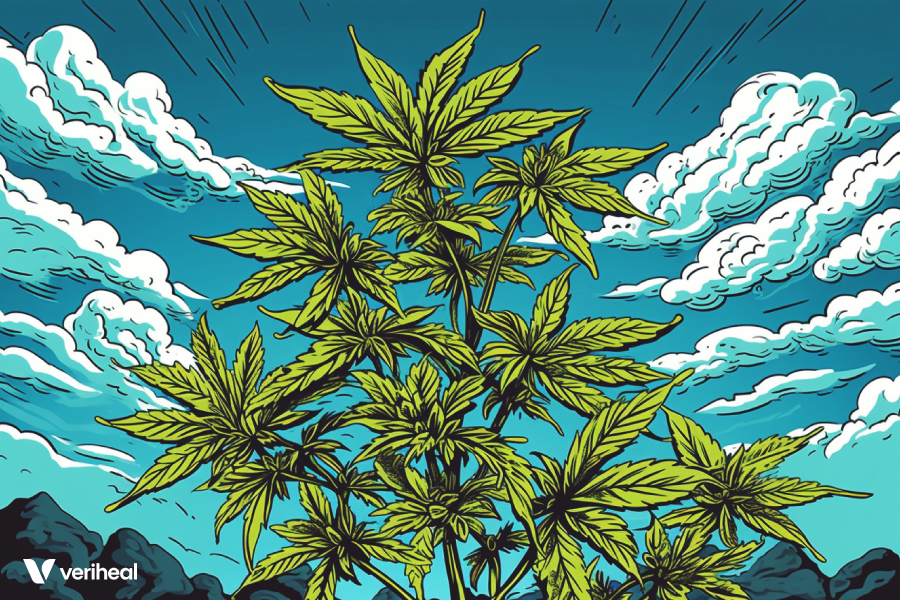An important part of incorporating CBD into your routine is being able to do your own research into the product you’re getting. This means ensuring you have a full-spectrum, third-party tested product to maximize the potential benefits and safety.
CBD has tremendous potential health benefits because of the way it interacts with the body’s endocannabinoid system plus other receptors outside the ECS. It also lacks the intoxicating effects of THC, so it won’t get its users high.
However, because cannabis-based compounds haven’t yet been approved by the FDA, there’s not as much oversight as we might like. That means it’s extra important for users to do their own research before buying any CBD products and to make sure they know exactly what they’re buying.
Third party testing is very important to ensure that you are getting the actual amount of CBD that is advertised since many over-the-counter CBD products are often mislabeled if sold in grocery stores, gas stations, or even boutique CBD shops. Lab testing also ensures that your product is safe and free of pesticides, heavy metals, mold and bacteria, or other harmful residual solvents.
A recent study by Johns Hopkins investigators has shown that online CBD products were only accurately labeled 24% of the time. Your best bet for well-tested sources of CBD flower, edibles, or tinctures continues to be your local friendly, neighborhood, licensed dispensaries.
- The Entourage Effect
- Hemp vs Marijuana?
- What are Strains?
- CBD-Dominant Strains to Try
The Entourage Effect
One thing to consider when choosing a cannabis strain for your CBD needs is the entourage effect. The entourage effect refers to how various compounds within the cannabis plant interact synergistically when the plant is ingested. CBD often works hand in hand with both THC and terpenes, which are responsible for the smell of the plant and enhanced benefits.
The entourage effect explains why finding the most purely CBD product out there might not be the best idea. When selecting a CBD isolate, you sacrifice all the potential benefits you could stand to gain from the combination of compounds in the plant.
Full-spectrum CBD oils or tinctures are the best for making most out of your CBD and are typically sourced from hemp. However, if you prefer flower, check out the strains below.
Hemp vs Marijuana?
Remember that cannabis plants are broadly divided into five types based on the dominant cannabinoid. “Recreational marijuana” is type I cannabis, meaning it is THC dominant. Hemp is type III or CBD-dominant. For completeness, type IV is CBG-dominant hemp. Type V is fibrous, industrial hemp virtually devoid of cannabinoids.
A lot of CBD on the market right now comes from the hemp plant. By law, hemp cannot contain more than 0.3% THC, making CBD federally legal to purchase in most states. This legal form of cannabis offers advantages to people looking for benefits without psychoactive effects.
Why You Should Get Your Medical Marijuana Card
Veriheal has satisfied millions of patients nationwide by giving them access to these benefits
- Larger purchase limits
- Peace of mind
- Enhanced legal protection
- Access to higher potency strains
- Save up to 25% on cannabis purchases
- Skip the line at the dispensary
Cannabis flowers that are high in CBD are called “type III” chemovars by researchers because of their CBD dominance. Hemp is the most popular and well-known example of a type III chemovar.
Cannabis plants like hemp make more CBD and thus tend to make less THC and other cannabinoids, and vice-versa. As a result, the rarest strains to find are type II chemovars, which are 1:1 THC:CBD strains.
However, even if hemp products are easier to attain, some consumers prefer to have more than 0.3% THC for mood boosting and pain reasons. Be advised that hempseed oil products are not the same as CBD or hemp oil because the hemp seeds contain no cannabinoids.
Basically, the higher amounts of cannabinoids and terpenes in the marijuana plant can bring on a more psychoactive and potent entourage effect. As a result, cannabis with high THC and terpene levels might better suit your needs if you suffer from chronic pain or nausea. Before buying, do your research to ensure you’re selecting a product that will actually fit your needs.
What are Strains?
When we talk about strains of cannabis, we are simply talking about specific varieties, carefully cultivated, named, and produced by growers to elicit certain effects. The cannabis strain you are purchasing, in other words, was likely grown with the specific intent of doing what it does in your body.
That’s good news because the use of a cannabis plant shouldn’t be a guessing game. If you have the opportunity to speak with the grower, you can ask them specifically what cannabinoids or terpenes it’s likely to have.
Growers put a lot of work into cultivating plants with the qualities they’re aiming for, and when they get it right, they want to show it off. Nowadays, strains are called chemovars by researchers depending on both their cannabinoid and terpene profiles.
CBD-Dominant Strains to Try
Now for the good stuff. Consider these strains the next time you’re in the market for a CBD product:
- Charlotte’s Web. Anecdotally shown to reduce seizures in those suffering from epilepsy, this low-THC strain has been legalized for medical use as of 2014 in Colorado. Charlotte’s Web also improves mood, focus, and appetite.
- ACDC. This 50/50 hybrid may have as high as 6% THC, depending on batch—but that’s still fairly low, and isn’t likely to send you reeling. Those coping with chemotherapy or chronic pain have had success with it.
- Ringo’s Gift. This marijuana strain is known for being physically relaxing and mentally stimulating, thanks to its high sativa content. While they won’t experience a traditional ‘high,’ users will notice a body buzz that helps mitigate anxiety without laying them out.
- Harlequin. Harlequin brings a lot to the table—a THC level that might go as high as 15%, a CBD level of at least 10%, and a very dominant sativa content of 75%. The CBD content negates the THC content, so it should be possible to smoke harlequin and still go about your daily business. Users find Harlequin a great way to combat pain.
Whatever strain you choose, make sure you know what’s contained within.
This article was originally published on 10/17/19. Updated on 4/12/23.
Author, Share & Comments

















